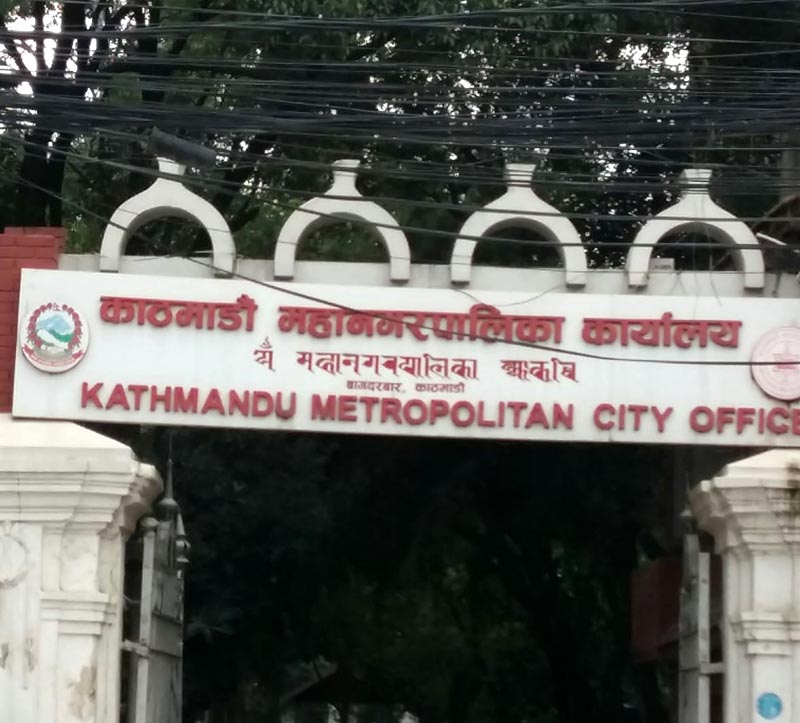Kathmandu metropolis’ anti-tobacco drive goes up in smoke
Kathmandu, November 17
Kathmandu Metropolitan City, on June 8, signed an agreement with Healthy Cities, a global network of cities committed to saving lives by preventing non-communicable diseases, with a major mandate to control purchase, sale and consumption of tobacco products or smoking in public places in an attempt to promote healthier lifestyle.
It was the fourth programme launched by the metropolis in four years, in a bid to discourage consumption and sale of tobacco products. But, the local government seems reluctant in implementing the programmes or making people aware about it.
KMC has said it will take prompt action against people selling tobacco products around school and hospital areas. But dozens of street vendors have been selling cigarettes and tobacco products near Bir Hospital, National Trauma Centre, Teaching Hospital and Paropakar Maternity and Women Hospital. On the compound wall of Trauma Centre, there is ‘no smoking’ sign, but people are seen puffing cigarettes at the very place.
In February, KMC Mayor Bidhya Sundar Shakya had announced that people dealing in tobacco products will have to obtain licence and sale of these products around hospital and school areas would be strictly prohibited. Shakya had also said city police would be deployed to enforce the rules. But, no rule has been implemented effectively till date. KMC has not taken any action against the people selling tobacco products near prohibited areas.
The Tobacco Product (Control and Regulatory) Act has restricted consumption of tobacco products in 12 public areas such as government offices, educational institutions, health facilities, parks, religious places, theatres and airports.
Narendra Bilas Bajracharya, head of Urban Health Division of KMC, admitted the local government had not been able to perform as expected.
“Although we have organised some campaigns in participation of school children and awareness programmes at all wards, we have failed to launch result-oriented actions,” he said. He added they were working to introduce action-oriented rules to address the issue.
Ram Charitra Sah, executive director of Centre for Public Health and Environmental Development, said existing rules and regulations were enough to control open purchase of tobacco products. “What we lack is effective implementation of the existing rules and public awareness against smoking, tobacco consumption.” Sah said intense monitoring of illegal buying, selling of tobacco products could help address the issue.
Nepal had ratified Framework for Convention on Tobacco Control Strategy in November 2006, based on which the government has enacted and amended the laws aiming to control tobacco consumption.
The government also amended a rule that allows printing and labelling of pictorial warning messages and graphics on the packaging of tobacco products in 2011. It had increased area of pictorial warning from 75 per cent to 90 per cent on the cover of tobacco products. However, no effective measures have been taken by the government to implement the law. According to Tobacco Atlas, every year more than 27,100 Nepalis are killed by diseases caused by consuming tobacco items. More than 21,000 children and 3,046,000 adults consume tobacco products each day.
According to World Life Expectancy survey, on an average, among 100,000 Nepalis, 101 die of lung diseases every year, making Nepal second in the world when it comes to deaths caused by lung ailments. Tobacco consumption is regarded as one of the major causes of lung ailments.






